The Best Sci-Fi Movies of the 2010s
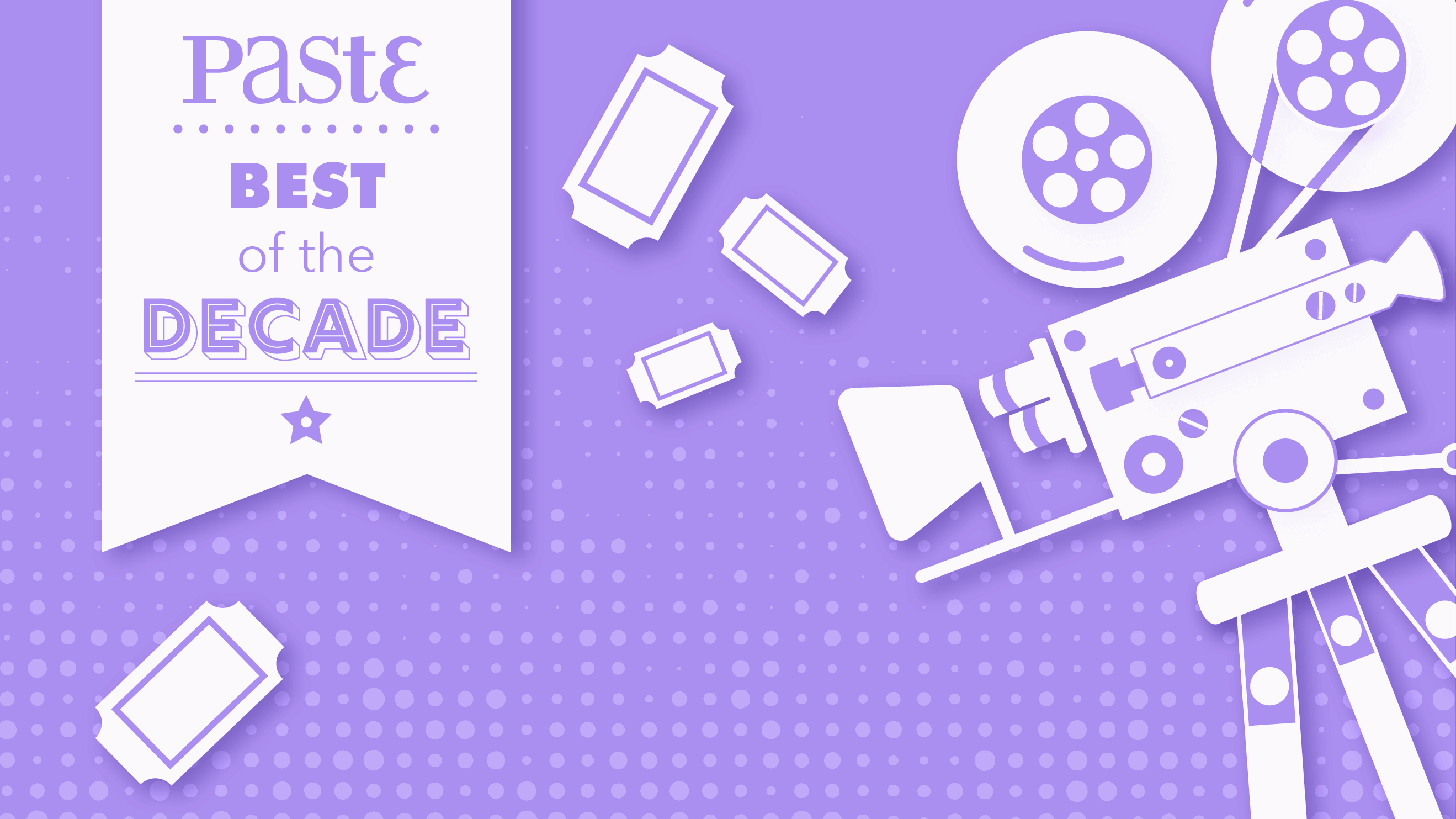
In putting together a list of the best science fiction films of the 2010s, we immediately deviated from the criteria used in our 100 Best Sci-Fi Movies of All Time list. For that list, in an effort to give the true breadth of the sci-fi genre its due and avoid having one-third of the list dominated by sub-genres that deserve (and have been accorded) lists of their very own, we purposefully stayed away, mostly, from films depicting post-apocalyptic wastelands, superheroes or kaiju. For this list, we’ve relaxed those restrictions a bit. In tipping the hat to the best sci-fi movies of a decade, it would seem a shame to exclude explorations of time-honored genre concepts like the multiverse, worm holes and flame-throwing electric guitars.
35. The Martian (2015)
Director: Ridley Scott
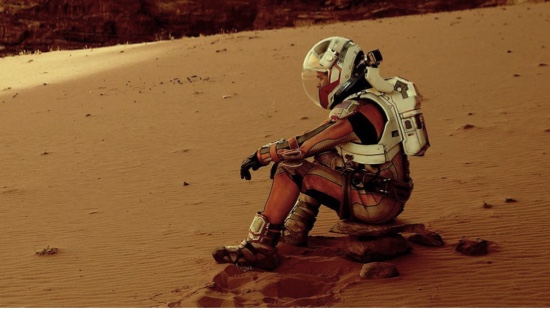
Ridley Scott’s The Martian is largely a cold, deliberate film, but there’s still something undeniably stirring about it. Instead of showering us with treacle, the film pays tribute to simple human attributes such as smarts, teamwork, sacrifice and determination, going about its business much like its resourceful characters do. And yet, the film’s underlying message is nonetheless inspiring: We can do great things if only we put our minds to it. Based on Andy Weir’s 2011 novel, The Martian is set in a not-too-distant future in which U.S. astronauts are conducting manned missions to the Red Planet. The latest expedition finds a crew that includes Commander Melissa Lewis (Jessica Chastain) and botanist Mark Watney (Matt Damon) getting ready to return home to Earth when a deadly storm suddenly bears down on them. In the rush to return to their ship, Watney is hit by debris and presumed dead, Lewis reluctantly taking the rest of her crew into space. Except, of course, Watney hasn’t really died. As you might imagine, much depends on the film’s outcome, and Scott finds a way, even in the story’s final moments, to undercut the obviously emotional stakes with a calm precision that makes it all the more thrilling and harrowing. Consequently, The Martian is subtly heroic, peeling away the potential histrionics of the stranded-on-Mars plot to look at the very human men or women who ensure that the spaceships can fly in the first place.—Tim Grierson
34. Dawn of the Planet of the Apes (2014)
Director: Matt Reeves

The second film in the rebooted Planet of the Apes series, Dawn of the Planet of the Apes is a beautifully designed mixed bag. It’s a good film, and if you enjoy action or sci-fi movies or keeping up with the latest advances in “How the hell did they pull that off?” visual effects, you should definitely see it. But in comparison to the fun and surprises of Rise, Dawn can’t help but feel a little self-serious and predictable. It’s a parable that strives to be an epic. Ascendant director Matt Reeves (Cloverfield, Let Me In) evidently has the ambition to equal The Empire Strikes Back or The Dark Knight when it comes to genre sequels, and even though the film falls considerably short of those lofty goals, you can’t fault him for trying.
Set roughly a decade after the events of Rise, heroic chimp Caesar (Andy Serkis, reprising his justly lauded performance-capture role) has established an Ewok-style primate paradise in the lush forests outside San Francisco. It’s an apparent utopia where the golden rule is “ape do not harm ape,” communication happens via sign language and the existence of humans, largely wiped off the planet by the virus introduced in Rise, is a distant memory. For some, that memory is more of a nightmare—including Caesar’s longtime frenemy Koba (Toby Kebbell), who has never been able to forgive the evils inflicted upon him in human captivity.
For all the flaws of character and narrative, Reeves has crafted a movie of nearly nonstop forward momentum. It’s visually compelling, never drags and benefits from ace technical contributions from the likes of cinematographer Michael Seresin (Harry Potter and the Prisoner of Azkaban) and Oscar-winning composer Michael Giacchino. —Geoff Berkshire
33. Monsters (2010)
Director: Gareth Edwards

Gareth Edwards’ 2010 directorial debut about a world going about its business six years after a crashed NASA probe has spawned monsters would lead to much bigger things (and bigger monsters) for the film’s director/writer/cinematographer—both 2014’s Godzilla reboot and even a piece of Star Wars (Rogue One: A Star Wars Story). It’s a bit ironic that Edwards got handed the keys to films depedent on spectacle when his Monsters depends on understatement and a focus on the all-too-human interactions going on in the midst of what sure seems to be an alien invasion. Monsters focuses on a photojournalist (Scoot McNairy) tasked with escorting the daughter (Whitney Able) of his boss out of a expanded quarantine zone and into the “safe” area beyond the border walls erected to keep the monsters out. (This is the rare case where a movie involving trying to keep “others” out of the United States has very little purposeful resonance with our current political climate.) The resulting film feels both familiar and strange, even as the performances and script sometimes flag—a viewer ultimately doesn’t really know what’s coming next, which is great quality for any sci-fi film to have. —Michael Burgin
32. The World’s End (2013)
Director: Edgar Wright

The third installment in Edgar Wright and Simon Pegg’s Cornetto trilogy—so named for the ice cream treat that makes a cameo in each episode—is a clever extension of the signature style the director and star/writing partners established with Shaun of the Dead and Hot Fuzz, and an expansion on their themes of friendship, nostalgia and standing up to the Man. Where their 2004 zombie comedy riffed on monster movies and their 2007 actioner took on buddy cop flicks, The World’s End mines sci-fi—specifically, a particular brand of mid-20th-century social science fiction (think Invasion of the Body Snatchers)—to explore dichotomous trends in the yearning to recapture youth and the homogenization of culture.
The novelty has worn off Wright and Pegg’s shtick a bit, but even the reiterated gags (the characters must traverse garden fences … again) are still funny—winks to their fans rather than lazy writing. For all their horsing around, Wright is an accomplished filmmaker who embeds story in the very mechanics of cinema. The film’s narrative is steeped in reminiscence—our selective memories when it comes to what it was like to be young and how youth shapes the people we become as adults, from the labyrinthine origins of slang phrases that comprise the private language of a group to the adolescent loves and rivals that still obsess us. The epilogue goes off the rails a little, but Wright and Pegg’s willingness to introduce a new reality (like the humans and zombies living side-by-side at the end of Shaun) suggests another motif in their oeuvre—the resiliency of the human spirit. Exceedingly quick-witted and fast-paced, The World’s End merits repeat viewings. If Shaun and Hot Fuzz are any indication, it, like old friends, will be even funnier and wiser than you remember. —Annlee Ellingson
31. Big Hero 6 (2014)
Directors: Don Hall, Chris Williams
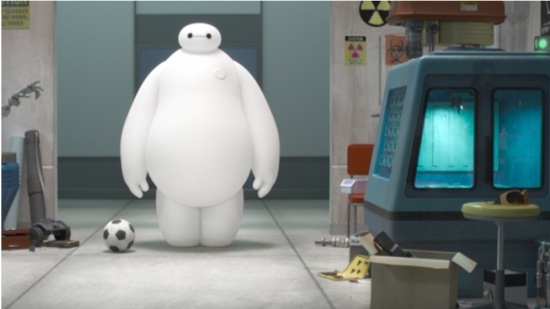
Big Hero 6 takes place in San Fransokyo, a futuristic metropolis where east and west collide in a loudly colored urban jungle. It’s in the city’s back alleys that we meet the aforementioned Hiro as he hustles his way through an illegal robot-fighting ring; he’s a smart kid, but he lacks ambition, at least until he signs up at San Fransokyo Tech (the movie’s M.I.T. surrogate) at the behest of his older brother, Tadashi (Daniel Henney). Fortune favors the clever Hiro, who gets in without breaking a sweat thanks to his last-minute invention, a nanobot legion with endless practical applications. But no sooner is he admitted than a fatal explosion at the school takes Tadashi’s life and sets Hiro on a grief spiral. Enter Baymax (Scott Adsit, formerly of TV’s 30 Rock, whose voiceover is the film’s secret weapon). Tadashi’s crowning achievement, Baymax is an inflatable “health care companion” designed to dispense medical aid at the mere sound of human distress. Baymax wants Hiro to feel better. Hiro wants to distract himself from his brother’s death by figuring out who stole his nanobots in the wake of the San Fransokyo Tech catastrophe. Thus, the kid whips up a suit of armor and a suite of programming upgrades to turn the big guy into an ass-kicking juggernaut. They’re quite a pair—one not seen in movies since 1999’s The Iron Giant—though Hiro isn’t battling crime as much as he’s simply trying to move on from his brother’s death. It’s the film’s through line, and a big part of what makes Big Hero 6 such a success.
There’s a lot here that feels familiar, particularly the origin story trappings and the assembly of the super team we’re used to in the MCU, but few among those films feel quite so refreshingly alive as Big Hero 6. There’s a beat here, a rhythm that the film follows from start to finish as it juggles adult themes through the lens of children’s fare This is an immensely entertaining picture—bright, vivid and smartly constructed on tropes that show themselves a bit too much in its peers. In Sony’s The Amazing Spider-Man films, the confrontation of loss plays like a grinding chore instead of an essential part of the hero’s journey. In Big Hero 6, that component feels organic. It belongs. Thrilling, well-crafted set pieces are only one aspect of what makes blockbusters like this tick. The bond between a boy and his android makes up the rest. —Andy Crump
30. Snowpiercer (2014)
Director: Bong Joon-Ho

There is a sequence midway through Snowpiercer that perfectly articulates what makes Korean writer/director Bong Joon-ho among the most dynamic filmmakers currently working. Protagonist Curtis Everett (Chris Evans) and his ragtag band of rebels have just entered a train compartment where they are ambushed by a legion of men armed with axes. Everett bravely (or foolishly, depending on your perspective) leads the charge and the two armies engage in a no-holds-barred, slow motion-heavy action set piece. Metal clashes against metal, and characters slash through their opponents as if their bodies were made of butter. It’s gory, imaginative, horrifying, beautiful, visceral and utterly glorious. As a whole, Snowpiercer may not always reach such a level, but it certainly does its darndest. Adapted from a French graphic novel by Jacques Lob, Benjamin Legrand and Jean-Marc Rochette, Snowpiercer is a sci-fi thriller set in a futuristic, post-apocalyptic world. Nearly two decades prior, in an ill-advised attempt to halt global warning, the government inundated the atmosphere with an experimental chemical that left our planet a barren, ice-covered wasteland. Now, the last of humanity resides on “Snowpiercer,” a vast train powered via a perpetual-motion engine. Needless to say, this scenario hasn’t exactly brought out the best of humanity.
Bleak and brutal, Snowpiercer may not quite reach the heights of Bong’s Korean output, but it does act as a more than successful demonstration of what he can bring to the table as a director. Bong may very well be playing a song that we’ve all heard before, but he does it with such gusto and dexterous skill you can’t help but be caught up the flurry.
29. Ad Astra (2019)
Director: James Gray

Brad Pitt plays Roy McBride, an astronaut from a “future near to ours,” who, when we meet him, is somehow surviving an explosion from an international space station by using his preternatural ability to control his heart rate and his breathing, remaining calm in the face of mortal peril. The explosion was caused by a series of solar flares that, it’s learned, may be caused by an experiment years before led by Roy’s father, Griffin (Tommy Lee Jones), who was thought to have died but may be alive and in fact may have sabatoged the mission. Government officials, fearing the flares could end up destroying all life on planet Earth, want Roy to send a message to Griffin’s ship, hopefully persuading him to halt the flares and come back home. Roy, who hasn’t seen his father since he was a teenager, isn’t sure the mission’s going to work…but he’s haunted by his own demons, demons not entirely disconnected from his father. If this sounds like an exciting space yarn, know that director James Gray is in a much more meditative state here: The film is more about the mystery of the soul of man than it is about the mystery of the universe, or even about some big spaceship fights. The universe is the backdrop to the story of a man and his thwarted issues with his father, and his inability to connect with anyone else in the world because of it. Like many of Gray’s films, Ad Astra is about the depths one can find within oneself, how far down anyone can climb and hide. Pitt wouldn’t seem like the ideal actor for a part like that—charisma drips off him so effortlessly that it leaves a trail behind him wherever he goes—but he’s impressive at playing a man who doesn’t understand himself but suspects the answer to the riddle that has vexed him his whole life must be in this man who gave him life but whom he never really knew. There’s a reserve here that Pitt draws on that works well for him; it’s a serious performance, but it never feels showy. He is searching for something, knowing full well he probably won’t find it. Gray does provide some thrills on the journey of father to find son, and they are extremely well-crafted, particularly a battle with space pirates on the moon that takes place in a world without both gravity and sound. And in Pitt he has a solid emotional center that the audience will still follow anywhere, even if it’s to the ends of the solar system just to confront his daddy issues. —Will Leitch
28. Alita: Battle Angel (2019)
Director: Robert Rodriguez

Alita: Battle Angel begins with Dyson Ito (Christoph Waltz), doctor to cyborgs, scavenging through a junkyard full of spare parts in order to find anything he can use. What better way to start a film than with a metaphor about itself? Just like Dr. Ito, director Robert Rodriguez and co-writer/co-producer James Cameron sift through the remnants of established sci-fi and cyberpunk properties in order to glue together a recognizable and cohesive narrative within the confines of its genre. Considering the talent involved, it’s not surprising that the finished product is a frequently fun and kinetic, visually pleasing sci-fi/actioner, albeit one that doesn’t have a single new or fresh part embedded in it. Again considering the talent involved, that feels like a lost opportunity. Based on the popular manga, Gunnm, Alita: Battle Angel mostly takes its visual cues and narrative structure from a 1993 anime adaptation. That anime is barely an hour long, yet manages to pack in a sprawling cyberpunk universe with a deep and complex lore that supports whatever over-the-top tech fetish cyber action it throws at you. The story follows Alita (Rosa Salazar), whom Dr. Ito finds during his junk hunt and brings back to life. Her brain is human, but the rest of her is artificial. Just like a cyborg version of Jason Bourne, she doesn’t remember her past, but has supreme ass-kicking instincts, leading Ito to suspect some sinister military use in her past. The future world that Battle Angel inhabits is the lovechild of Blade Runner and Mad Max, a grimy post-apocalyptic city that’s also a grand, overpopulated cyberpunk metropolis. Apart from Alita gradually figuring out her ass-kicking skills, there’s another clear reason for giving the character amnesia: So she can be used as an exposition dump to settle the audience into the story’s world and the hodgepodge of various sub-plots that co-screenwriters James Cameron, Laeta Kalogridis and Robert Rodriguez cram into a two-hour runtime. However, when the fighting finally begins, Battle Angel gets its metallic ass in gear. Rodriguez pushes the confines of the PG-13 rating to create some genre- and source-material-appropriate hack-and-slash gruesomeness with a significant amount of cyborg bodies split in half, decapitated and torn to pieces. For fans of the manga and anime, there isn’t much in the way of new material to be found here, though nor is it likely to grate on one’s fandom to the extent that the Ghost of the Shell live-action adaptation did. For fans of futuristic sci-fi/action, it should provide an engaging experience. —Oktay Ege Kozak
27. Tron: Legacy (2010)
Director: Joseph Kosinski
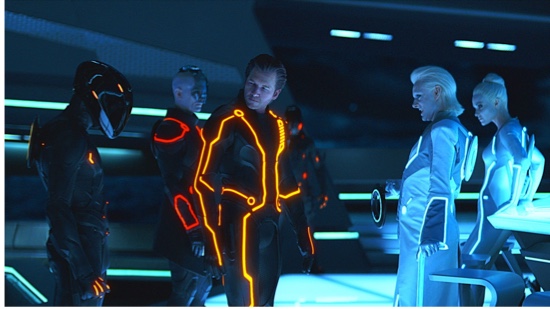
Not quite 30 years past its predecessor, the sequel to Steven Lisberger’s religious cyber-allegory doubles down on all of Tron’s big ideas, balking at nothing, embracing everything, re-introducing Computer Jesus/famous engineer Flynn (Jeff Bridges) in full saintly beard and robe, messiah and Jedi and godhead all at once. And all this time he’s been hiding inside the cyberworld he once helped liberate from an evil AI, when his son, sexy hacker Sam Flynn (Garrett Hedlund), accidentally follows in his father’s footsteps and materializes within the much-updated cyberworld, discovering both what the elder Flynn’s been up to and just how fascistic cyberlife has gotten. The spiritual demagogue this time around is Clu (de-aged, digital Jeff Bridges), now far corrupted beyond the benevolent force Flynn once programmed him to represent, and the political subtext this time around is just all text. But with a lifetime’s worth of digital effects advancements behind him, director Joseph Kosinski leans hard into building an overwhelming sense of awe—which makes him something of the perfect choice to helm the sequel. Like the first Tron, in which feeling gobsmacked by technology is kind of the point, Legacy compensates for any weaknesses in world building or shoddy storytelling with sheer scale. Daft Punk scores such astounding melodrama as deftly as they were obviously born to do. Accordingly, Kosinski holds back on the digital Jeff Bridges, couching the unreality within the excuse of an unreality—he’s supposed to look a bit off, a bit concocted—and gauging the distance between what he wants to do and what he knows he’s capable of doing with care and grace far beyond what’s demanded of him in what could have amounted to little more than a long-overdue Disney cash-in. —Dom Sinacola
26. Rogue One: A Star Wars Story (2016)
Director: Gareth Edwards
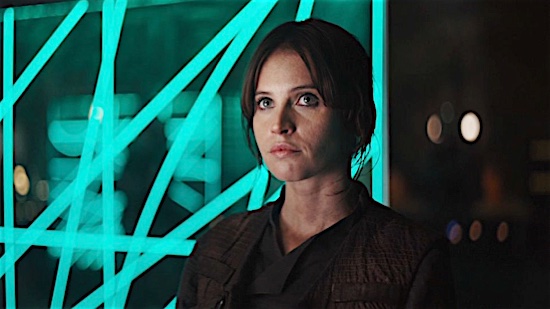
Gareth Edwards’ venture into a galaxy far, far away is the Star Wars film we never knew we needed. A triumphantly thrilling, serious-minded war movie, it’s incalculably stronger for the fact that it’s not the first chapter in a new franchise, but complete and self-contained (to the extent that any Star Wars film can be) in a way that no other Star Wars entry, other than A New Hope, is capable of achieving. It doesn’t “set the stage” for an inevitable next installment, and its characters are all the realer for the fact that they’re not perpetually sheathed in blasterproof Franchise Armor. I had no idea until I watched Rogue One how refreshing that concept would be.
Our protagonist is Jyn Erso (Felicity Jones), a plucky young woman whose brilliant scientist father (Mads Mikkelsen) has been controlled throughout her life by the Empire and coerced into designing superweapons of the moon-sized, planet-killing variety. Forced into adulthood on the fringes of the Rebel Alliance, she’s assembled a Jack Sparrow-esque rap sheet and, as the film begins, finds herself in Imperial prison on various petty charges. Sprung by the rebels (who all carry themselves like serious badasses, by the way), she’s sucked into a mission involving her father, the newly completed Death Star and a cast of resistance fighters and idealists all opposing the Empire in one way or another. It’s often been said that George Lucas’s original work mirrors the likes of Kurosawa and spaghetti westerns, and that’s never been more true than in Rogue One as it slowly assembles its team.
This is pretty far from the kid-friendly, fast-talking, joke-cracking bluster of John Boyega’s Finn in The Force Awakens, and any fears that Disney was trying to lighten the mood of the film by “inserting humor” via subsequent reshoots are positively unfounded. The droid character of K-2SO, voiced by Alan Tudyk, shoulders almost the entire load of comic relief, and although his funnier lines do occasionally seem out of place, they ultimately buoy the film with much-needed levity. Indeed, without those occasional chuckles, one might describe the film as positively dour—they’re well calculated to be just enough. What Rogue One is, most accurately, is what it was sold as all along: A legitimate war movie/commando story, albeit with some familial entanglements. —Jim Vorel
25. Guardians of the Galaxy (2014)
Director: James Gunn
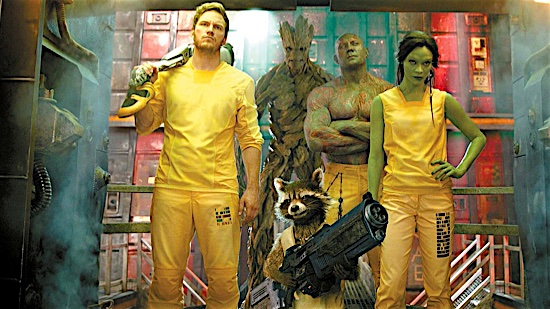
Director (and co-writer) James Gunn has taken the somewhat obscure team (to non-comic-book fans, at least) and kept the source material’s tone, attitude and bombastic settings intact. As the self-named Star-Lord, Peter Quill (Chris Pratt) presents viewers with a pretty irresistible amalgam of Han Solo, Mal Reynolds and Captain Kirk. (Pratt owns this role.) The scene-stealing duo of Rocket (voiced by Bradley Cooper) and Groot (voiced by Vin Diesel) also provides the latest reminder of how convincing mo-cap-aided CGI has become. (Within moments after being introduced to them, I was yearning for a Rocket and Groot buddy picture.) Frankly, it’s hard to compete with Quill, Rocket and Groot, but Drax (Dave Bautista) and Gamora (Zoe Saldana) don’t need to shine as brightly—unlike The Avengers, one doesn’t get the sense each team member’s time center stage is being meticulously measured. (One other important thing to note about Groot—he is Groot.) Marvel’s rambunctious entry into the space-opera genre—and the cornerstone of its “Cosmic Marvel” roster of characters and storylines—so perfectly embodies what the preceding months of hype and hope foretold that even its weak points feel almost like unavoidable imperfections—broken eggs for a pretty satisfying omelet. —Michael Burgin
24. Pacific Rim (2013)
Director: Guillermo del Toro
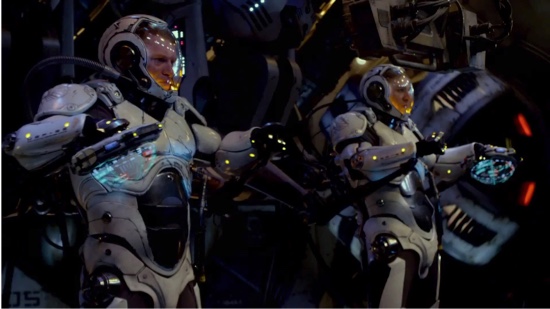
With Pacific Rim, Guillermo del Toro has reinvigorated the Kaiju film, one of those rare pulp genres that’s actually native to the silver screen. In doing so, del Toro pulls off an even rarer feat, creating a movie that both distills and perfects the tradition from which it’s drawn. (Del Toro also delivers a few lessons in genre storytelling that many of the top names in sci-fi and fantasy would do well to emulate.) Ultimately, del Toro’s film is less an homage to the Kaiju film than the long overdue perfecting of it using technology that has finally caught up to the genre’s demands. (In this, it shares much with the superhero film efforts of the last decade or so.) Pacific Rim is the Kaiju film Ishiro Honda would have made had he $200 million and the technology of today to spend it on. And regardless of its box office success, it is the standard against which future Kaiju films will be—or in the case of its lackluster sequel, was—judged. —Michael Burgin
23. Thor: Ragnarok (2017)
Director: Taika Waititi
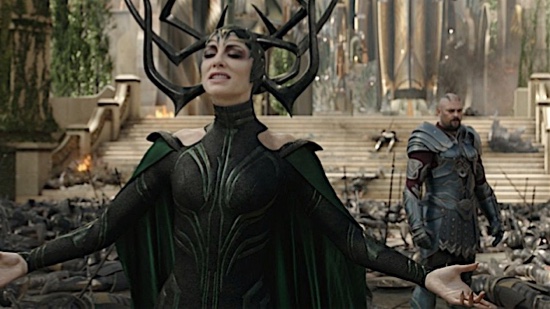
Like the Guardians of the Galaxy films, which are the closest non-Thor cousins in tone and spirit to the third installment in the god of Thunder’s personal franchise, Thor: Ragnarok opens with a lively prologue/set piece involving its protagonist Thor-ing like a boss accompanied by a rockin’ tune. It’s a great nod to all the comic book fans jonesin’ to see Thor using Mjolnir, his trusty hammer, to just all-out wreck those who oppose him. From there, Waititi keeps the pace swift, resolving a few plot cliffhangers, throwing down an extended cameo, introducing this film’s big bad in Hela (a dependably enjoyable Cate Blanchett), propelling Thor (and Loki) to their next stop on the “it’s a big universe” express, meeting new faces (Jeff Goldblum’s Grandmaster and Tessa Thompson’s Valkyrie foremost among them), reuniting with everyone’s favorite green-thewed god-pummeler before bringing it all back for the big finale in Asgard. The result? One of those two-hour-plus films that you’ll swear was just an hour-forty. Waititi seems to delight in exploring the interplay between Hemsworth’s physical and comic presence. It yields a version of Thor that might annoy some comic book purists (but certainly didn’t this one), but it’s an undeniable asset for the franchise. Some years and a few Avengers films to go before audiences would know what’s next for Thor (and whether it would involve Hemsworth), Thor: Ragnarok, left us all suddenly eager to find out. —Michael Burgin
22. Inception (2010)
Director: Christopher Nolan
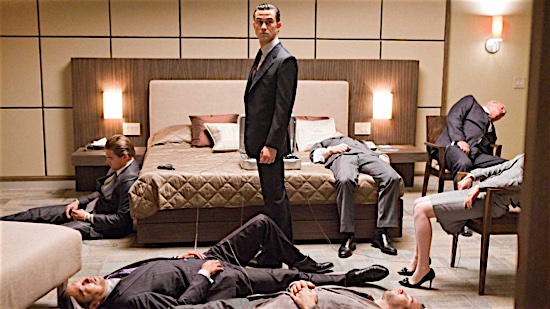
In the history of cinema, there is no twist more groan-inducing than the “it was all a dream” trope (notable exceptions like The Wizard of Oz aside). With Inception, director Christopher Nolan crafts a bracing and high-octane piece of sci-fi drama wherein that conceit isn’t just a plot device, but the totality of the story. The measured and ever-steady pace and precision with which the plot and visuals unfold, and Nolan mainstay wally Pfister’s gorgeous, globe-spanning on-location cinematography, implies a near-obsessive attention to detail. The film winds up and plays out like a clockwork beast, each additional bit of minutia coalescing to form a towering whole. Nolan’s filmmaking and Inception’s dream-delving work toward the same end: to offer us a simulation that toys with our notions of reality. As that, and as a piece of summer popcorn-flick fare, Inception succeeds quite admirably, leaving behind imagery and memories that tug and twist our perceptions—daring us to ask whether we’ve wrapped our heads around it, or we’re only half-remembering a waking dream.
Director Andrei Tarkovsky wrote a book about his philosophy towards filmmaking, calling it Sculpting in Time; Nolan, on the other hand, doesn’t sculpt, he deconstructs. He uses filmmaking to tear time apart so he can put it back together as he wills. A spiritual person, Tarkovsky’s films were an expression of poetic transcendence. For Nolan, a rationalist, he wants to cheat time, cheat death. His films often avoid dealing with death head-on, though they certainly depict it. What Nolan is able to convey in a more potent fashion is the weight of time and how ephemeral and weak our grasp on existence. Time is constantly running out in Nolan’s films; a ticking clock is a recurring motif for him, one that long-time collaborator Hans Zimmer aurally literalized in the scores for Interstellar and Dunkirk. Nolan revolts against temporal reality, and film is his weapon, his tool, the paradox stairs or mirror-upon-mirror of Inception. He devises and engineers filmic structures that emphasize time’s crunch while also providing a means of escape. In Inception different layers exist within the dream world, and the deeper one goes into the subconscious the more stretched out one’s mental experience of time. If one could just go deep enough, they could live a virtual eternity in their mind’s own bottomless pit. “To sleep perchance to dream”: the closest Nolan has ever gotten to touching an afterlife. —Michael Saba and Chad Betz
21. Attack the Block (2011)
Director: Joe Cornish

Written and directed by Joe Cornish, the sci-fi action comedy centers on a gang of teenage thugs—particularly their disgruntled leader, Moses, remarkably underplayed by a young John Boyega—and their housing project in South London. When the defiant juveniles take their crime to a new level and mug an innocent nurse (a delightful Jodie Whittaker), they immediately find themselves plagued by alien invaders. These hideous creatures, with their jet black fur and glowing blue fangs, want nothing more than to destroy the boys and their tower block.
In the spirit of Spielberg—even more so than J.J. Abrams’ Spielberg ode of the same year, Super 8—Cornish uses alien beings as the catalyst to bring supernatural redemption to a person and a community. He focuses specifically on London’s socioeconomic bottom half and the turmoil surrounding them, exposing the lies that society’s youth buy into that prolong cultural discontinuity. A comical scene, in which Moses tries to make sense of the aliens while giving excuses for his criminal behavior, highlights this cleverly—he doesn’t just blame the government for violence and drugs in his neighborhood, he blames the government for the whole alien invasion.
Cornish, however, doesn’t simply confront this hopeless attitude, he points toward hope—most vividly in the way Moses battles the aliens, his fight rapt with symbolic implications. Though he tries to escape the beasts through running and avoidance, he realizes he must inevitably face them, but not on his own. In Attack the Block, the alien invasion becomes one giant metaphor for the darkness that binds Moses, his friends and his block—a threat that can only be countered with the pivotal power of community. —Maryann Koopman Kelly
20. Upstream Color (2012)
Director: Shane Carruth
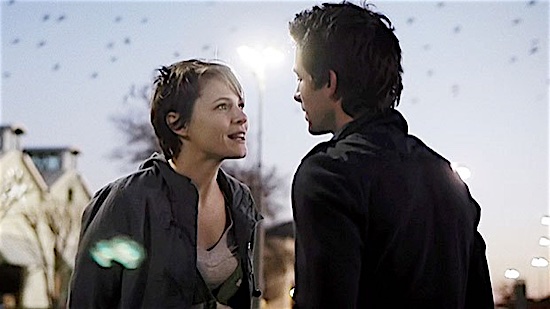
Shane Carruth’s Upstream Color builds a stunning mosaic of lives overwhelmed by decisions outside their control, of people who don’t understand the impulses that rule their every action. Told with stylistic bravado and minimal dialogue (none in the last 30 minutes), the film continually finds new ways to evoke unexpected feelings. The visuals—from stunning shots of underwater schist to microscopic photography—combine with extraordinary sound design and rhythmic cross-cutting to create a hypnotic portrait of the story’s intertwined narratives. The means to the interconnectivity is a small worm whose parasitic endeavors link lives together, but Carruth doesn’t bother with sci-fi exposition. The organism does what it does, and that’s all we need to know. This allows more time to explore the emotional impact the organism has on the characters. Ultimately, that’s where Upstream Color succeeds. An elaborate intellectual concept fuels the film, but a rich sense of humanity gives it power. —Jeremy Matthews
19. Dredd (2012)
Director: Pete Travis

Karl Urban—who’s no stranger to tightly wound sci-fi fare (including the unfairly maligned The Chronicles of Riddick) provides the scowl and chin of Judge Joseph Dredd—a total-law package professional who is clearly as disinterested in humoring his rookie partner as the script is in coddling its audience. A few lines of raspy Man with No Name narration, coupled with a superbly bleak establishing shot from cinematographer Anthony Dod Mantle, are all the generosity afforded by the filmmakers toward understanding this world before it unleashes chase sequences and bursting heads. This is a film that aims squarely at respecting its source’s established fan base, and cares little for casualties who can’t hang on through its grindhouse paces.
Though the competent, workmanlike approach to achieving the visceral thrills of the source material is excellently realized, it comes at the expense of sidelining writers Wagner and Ezquerra’s satirical background radiation of fascism’s consequences. While a few moments of gallows humor emerge—typically of the “Ouch!” variety—any subtext that might get in the way of servicing its adrenalized momentum is cordoned off, so as not to disturb the thrilling crime scene. Nothing more to see here, folks. Move along. But this is not even an offense punishable by three days in an Iso-Cube. The rule of law by which audiences are meant to abide is laid out immediately and authoritatively, and—just in case you needed reminding—Dredd is the law. —Scott Wold
18. Looper (2012)
Director: Rian Johnson
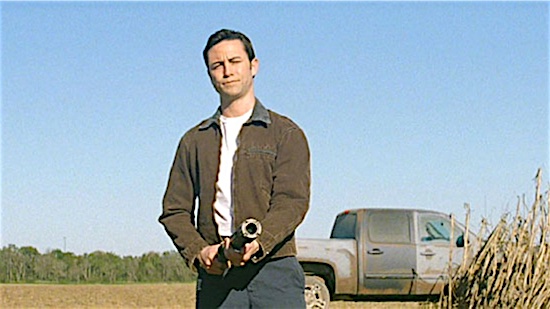
Joseph-Gordon Levitt channels his inner badass to act as the younger version of Bruce Willis, nailing (with the help of some CGI and prosthetics) Willis’s ubiquitous action presence. The best case made on film for “If time travel is outlawed, only outlaws will have time travel!”, writer/director Rian Johnson wisely treats the tech as a given, focusing instead on the dramatic scenarios humans’ use of it would create. The result is one of the more thrilling time-travel-infused flicks of the last few decades, and one obvious reason why Johnson was trusted with a Star Wars film not long afterward. —Christian Becker
17. Okja (2017)
Director: Bong Joon-ho

Okja takes more creative risks in its first five minutes than most films take over their entire span, and it doesn’t let up from there. What appears to be a sticking point for some critics and audiences, particularly Western ones, is the seemingly erratic tone, from sentiment to suspense to giddy action to whimsy to horror to whatever it is Jake Gyllenhaal is doing. But this is part and parcel with what makes Bong Joon-ho movies, well, Bong Joon-ho movies: They’re nuanced and complex, but they aren’t exactly subtle or restrained. They are imaginative works that craft momentum through part-counterpart alternations, and Okja is perhaps the finest example yet of the wild pendulum swing of a Bong film’s rhythmic tonality.
Okja is, in other words, the culmination of Bong’s unique rhythms into something like a syncopated symphony. The film opens with Tilda Swinton’s corporate maven Lucy Mirando leering out an expository dump of public relations about her new genetically created super-pigs, which will revolutionize the food industry. We’re also introduced to Johnny Wilcox, played by Gyllenhaal as a bundle of wretched tics, like there’s a tightly-wound anime character just waiting to rid itself of its Gyllenhaal flesh, but in the meantime barely contained. Okja is the finest of the super-pigs, raised by a Korean farmer (Byun Hee-bong) and his granddaughter Mija (Ahn Seo-hyun), an orphan. Okja is Mija’s best friend, a crucial part of her family. Bong takes his sweet time with this idyllic life Mija and Okja share. The narrative slows down to observe what feels like a Miyazaki fantasy come to life. Mija whispers in Okja’s ear, and we’re left to wonder what she could possibly be saying. The grandfather has been lying to Mija, telling her he has saved money to buy Okja from the Mirando corporation. There is no buying this pig; it is to be a promotional star for the enterprise. When Johnny Wilcox comes to claim Okja (a sharp note of dissonance in the peaceful surroundings) the grandfather makes up an excuse for Mija to come with him to her parents’ grave. It is there he tells her the truth.
Mija’s quest to rescue Okja brings her in alliance with non-violent animal rights activists ALF, which ushers the film into a high-wire act of an adventure where Bong’s penchant for artful set-piece is pushed to new heights. The director works with an ace crew frontlined by one of our greatest living cinematographers, Darius Khondji, who composes every frame of Okja with vibrant virtuosity. The very action of the film becomes action that is concerned with its own ethics. As the caricatures of certain characters loom larger, and the scope of the film stretches more and more into the borderline surreal, one realizes that the Okja is a modern, moral fable. It’s not a film about veganism, but it is a film that asks how we can find integrity and, above all, how we can act humanely towards other creatures, humans included. The answers Okja reaches are simple and vital, and without really speaking them it helps you hear those answers for yourself because it has asked all the right questions, and it has asked them in a way that is intensely engaging. —Chad Betz
16. Interstellar (2014)
Director: Christopher Nolan

Whether he’s making superhero movies or blockbuster puzzle boxes, Christopher Nolan doesn’t usually bandy with emotion. But Interstellar is a nearly three-hour ode to the interconnecting power of love. It’s also his personal attempt at doing in 2014 what Stanley Kubrick did in 1968 with 2001: A Space Odyssey, less of an ode or homage than a challenge to Kubrick’s highly polarizing contribution to cinematic canon. Interstellar wants to uplift us with its visceral strengths, weaving a myth about the great American spirit of invention gone dormant. It’s an ambitious paean to ambition itself. The film begins in a not-too-distant future, where drought, blight and dust storms have battered the world down into a regressively agrarian society. Textbooks cite the Apollo missions as hoaxes, and children are groomed to be farmers rather than engineers. This is a world where hope is dead, where spaceships sit on shelves collecting dust, and which former NASA pilot Cooper (Matthew McConaughey) bristles against. He’s long resigned to his fate but still despondent over mankind’s failure to think beyond its galactic borders. But then Cooper falls in with a troop of underground NASA scientists, led by Professor Brand (Michael Caine), who plan on sending a small team through a wormhole to explore three potentially habitable planets and ostensibly secure the human race’s continued survival. But the film succeeds more as a visual tour of the cosmos than as an actual story. The rah-rah optimism of the film’s pro-NASA stance is stirring, and on some level that tribute to human endeavor keeps the entire yarn afloat. But no amount of scientific positivism can offset the weight of poetic repetition and platitudes about love. —Andy Crump
15. Star Wars: The Force Awakens (2015)
Director: J.J. Abrams
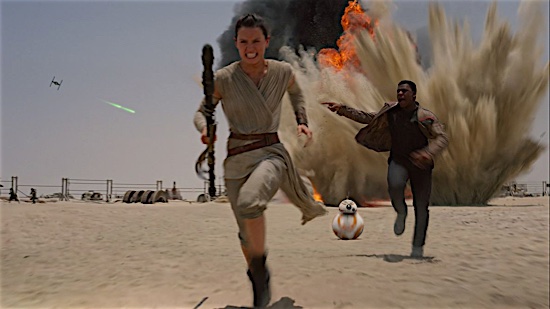
The Force Awakens provided a remedy for the near-terminal Prequel-itis of fans. J.J. Abrams and company accomplished this act of restorative cinema primarily through a return to the “dirty future” aesthetic that made the Original Trilogy feel so real (no matter how absurd the dialogue being delivered by the characters). That’s not to say CGI is lacking, but whereas budget and technology constraints helped the first three films and an overabundance hurt the next three, the balance between practical and special effects in The Force Awakens feels near perfect. I say “primarily” not to take away from other factors, such as casting. Daisy Ridley, John Boyega and Adam Driver are all solid, and Oscar Isaac brings a palpable vigor to his role. Ultimately, The Force Awakens just feels right in ways the Prequels never did. —Michael Burgin
14. Ex Machina (2015)
Director: Alex Garland

While popular science-fiction films have taught us that, no matter what we do, robots that become self-aware will eventually rise up and kill us, recent advances in artificial intelligence in the real world have confirmed something much seedier about the human imperative: If given the technology to design thinking, feeling robots, we will always try to have sex with them. Always. Alex Garland’s beautifully haunting film seems to want to bridge that gap. Taking cues from obvious predecessors like 2001: A Space Odyssey and AI—some will even compare it to Her—Ex Machina stands solidly on its own as a highly stylized and mesmerizing film, never overly dependent on CGI, and instead built upon the ample talents of a small cast.
The film’s title is a play on the phrase deus ex machina (“god from the machine”), which is a plot device wherein an unexpected event or character seemingly comes out of nowhere to solve a storytelling problem. Garland interprets the phrase literally: Here, that machine is a robot named Ava, played by Swedish actress Alicia Vikander, and that nowhere is where her creator, Nathan (Oscar Isaac), performs his research and experiments. Ava is a heavenly mechanical body of sinewy circuitry topped with a lovely face, reminiscent of a Chris Cunningham creation. Her creator is an alcoholic genius and head of a Google-like search engine called Bluebook which has made him impossibly rich. Enter Caleb (Domhnall Gleeson), who is helicoptered in after winning a lottery at work for which the prize is a week at Nathan’s house. Nathan also intends to use Caleb to conduct something of a Turing test on steroids with Ava to determine if she can truly exhibit human behavior.
In fact, Ex Machina seems designed around the performances of its excellent mini-ensemble. Vikander especially finds the perfect balance between prosthetic personality and genuine empathy, enhanced by the film’s own teetering between some wonderfully titillating and creepy moments: Caleb watching Ava disrobe over a monitor, revealing her metal and circuitry; Nathan and his other sex-bot performing a jarringly synchronized disco dance; and Caleb losing his shit and questioning his own humanity with the help of a razor blade. It’s an awfully attractive film, too, appropriately seductive—no doubt designed to provoke conversations about the morality inherent in “creating” intelligence—as well as whether it’s cool to have sex with robots or not. —Jonah Flicker
13. High Life (2019)
Director: Claire Denis
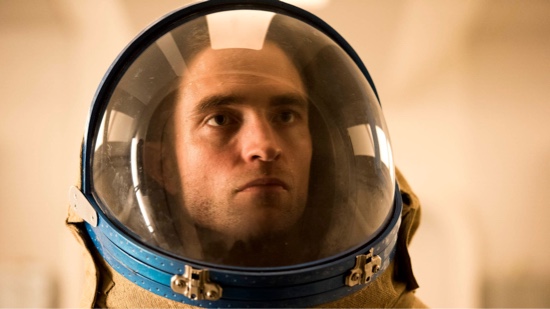
High Life begins with a moment of intense vulnerability, followed immediately by a moment of immense strength. First we glimpse a garden, verdant and welcoming, before we’re ushered to a sterile room. There we realize there’s a baby alone while Monte (Robert Pattinson), her father maybe, consoles her, talking through a headset mounted within his space helmet. “Da da da,” he explains through the intercom; the baby starts to lose her shit because he’s not really there, he’s perched outside, on the surface of their basic Lego-piece of a spaceship, just barely gripped on the edge of darkness. They’re in space, one supposes, surrounded by dark, oppressive nothingness, and he can’t reach her. They’re alone. Next, Monte empties their cryogenic storage locker of all the dead bodies of his once-fellow crew members, lifting their heavy limbs and torsos into space suits, not because it matters, but maybe just because it’s something to do to pass the time, as much a sign of respect as it is an emotional test of will. Monte looks healthy and capable, like he can withstand all that loneliness, like he and his daughter might actually make it out of this OK, whatever this is. High Life lives inside that juxtaposition, displaying tenderness as graphically as violence and anger and incomprehensible fear, mining all that blackness surrounding its characters for as much terror as writer-director Claire Denis can afford without getting obvious about it. Pattinson, flattened and lithe, plays Monte remarkably, coiled within himself to the point that he finishes every word deep in his throat, his sentences sometimes total gibberish. He doesn’t allow much to escape his face, but behind his eyes beams something scary, as if he could suddenly, and probably will, crack. He says as much to Willow, his kid, whispering to her while she sleeps that he could easily kill them both, never wanting to hurt her but still polluting her dreams. He can’t help it, and neither can Denis, who, on her 14th film (first in English), can make an audience believe, like few other directors, that anything can happen. Madness erupts from silence and sleep, bodily fluids dripping all over and splattering throughout and saturating the psyches of these criminal blue collar astronauts, the overwhelming stickiness of the film emphasizing just how intimately close Denis wants us to feel to these odd, sick fleshbags hurtling toward the edge of consciousness. —Dom Sinacola
12. Black Panther (2018)
Director: Ryan Coogler
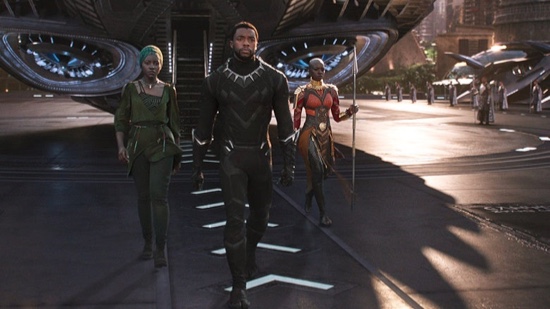
Black Panther might be the first MCU film that could claim to most clearly be an expression of a particular director’s voice. We shouldn’t go so far as to call it auteurist, because it’s still a Disney movie and (perhaps ironically) a part of that monopolizing Empire—i.e., eat the rich—but Black Panther’s action scenes, especially, feel one with Coogler’s oeuvre. Look only to an early scene in a South Korean casino, in which T’Challa (Chadwick Boseman), Okoye (Danai Gurire) and Nakia (Lupita Nyong’o) plan to intercept a deal between Klaue and everyone’s favorite CIA milquetoast, Everett Ross (Martin Freeman, lovable) for a vibranium-filled artifact which Klaue stole from some colonizer-run museum with Killmonger’s help. We’re introduced to Klaue through the surprising spryness of his violence—Andy Serkis, too, freed from mocap, is still an amazing presence, even as a gangster shitbag—and Coogler gets on his wavelength, carving out the geography of the casino in long tracking shots, much like he convinced us to love stained, shitty-seeming Philadelphia gyms in Creed by helping us to comprehend the many crevices and corners of each hole in the wall. When the casino brawl breaks out into the streets, morphing into a death-defying car chase (slow motion thankfully kept to a minimum), we feel as if we know exactly what these characters—and this wonderful director—are capable of. His vision for Wakanda—shot by recent Oscar nominee Rachel Morrison as an Afrofuturist paradise—rightly draws its inspiration from an omnibus of natural sources, just the a casino scene affords Morrison the chance to go full Deakins (James Bond references all over this thing), imagining the world of the MCU as Steven Soderbergh might have scoped out Traffic, developing a fully sensual visual language to define the many locations of this world-hopping adventure without resorting to sterile maps or facile borders. If T’Challa’s whole narrative arc concerns the need for him to realize the importance of bringing Wakanda into our globalized world, of revealing its riches to a world that probably doesn’t deserve them, then the vastness of that world, the many different kinds of people who populate it, must be felt in all of its ungraspable diversity. —Dom Sinacola
11. Evolution (2015)
Director: Lucile Hadžihalilovic
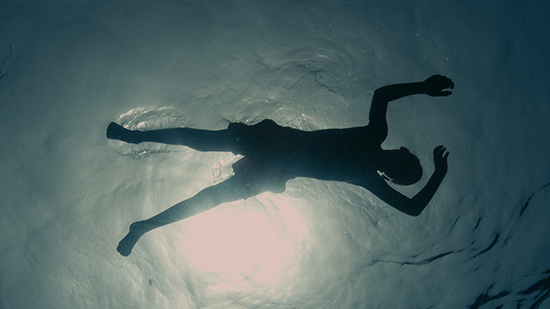
Hadžihalilovic’s gorgeous enigma is anything and everything: creature feature, allegory, sci-fi headfuck, Lynchian homage, feminist masterpiece, 80 minutes of unmitigated gut-sensation—it is an experience unto itself, refusing to explain whatever it is it’s doing so long as the viewer understands whatever that may be on some sort of subcutaneous level. In it, prepubescent boy Nicolas (Max Brebant) finds a corpse underwater, a starfish seemingly blooming from its bellybutton. Which would be strange were the boy not living on a fatherless island of eyebrow-less mothers who every night put their young sons to bed with a squid-ink-like mixture they call “medicine.” This is the norm, until Nicolas’s boy-like curiosity begins to reveal a world of maturity he’s incapable of grasping, discovering one night what the mothers do once their so-called “sons” have fallen asleep. From there, Evolution eviscerates notions of motherhood, masculinity and the inexplicable gray area between, simultaneously evoking anxiety and awe as it presents one unshakeable, dreadful image after another. —Dom Sinacola
10. Edge of Tomorrow (2014)
Director: Doug Liman
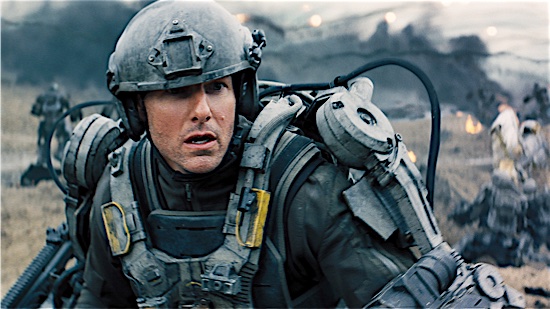
Major William Cage (Tom Cruise) spends his days in the film’s near-future setting spinning the armed forces’ ongoing efforts against a hostile alien race (dubbed Mimics) without ever setting foot on a battlefield. At least until a gruff general (Brendan Gleeson) sends him on a particularly dicey mission. The result is Cage’s death, but the story doesn’t end there. Instead Cage awakes at the beginning of the day he died with his memory intact, and quickly discovers the resurrections will recur every time he dies. His only hope of escaping the endless cycle lies with super-soldier Rita Vrataski (Emily Blunt), who knows from experience exactly how Cage might be able to use this new ability to help humanity win the war of the worlds.
Based on the manga All You Need Is Kill by Hiroshi Sakurazaka and adapted for the screen by Christopher McQuarrie (Cruise’s current go-to director completely in sync with his physically-defying action spectacle) and Jez and John-Henry Butterworth, Edge of Tomorrow recalls other notable time loop sagas, including Groundhog Dayand Source Code in the witty and engaging way it moves its story forward piece by piece. As Cage relives the same day over and over again, he also learns how to become a true soldier, trains with (and falls for) Rita, discovers how the aliens function and ever so patiently formulates the perfect plan of attack. Like a videogame hero with infinite lives, Cage has the opportunity to refine and correct every mistake he makes along the way. However long Cage is on that journey, Edge of Tomorrow is a blast, and Cruise carries the surprisingly amusing action like a pro—his skill with deadpan comedy proving even more valuable than his infamous enthusiasm for sacrificing his flesh over and over and over. —Geoff Berkshire
9. Star Wars: The Last Jedi (2017)
Director: Rian Johnson
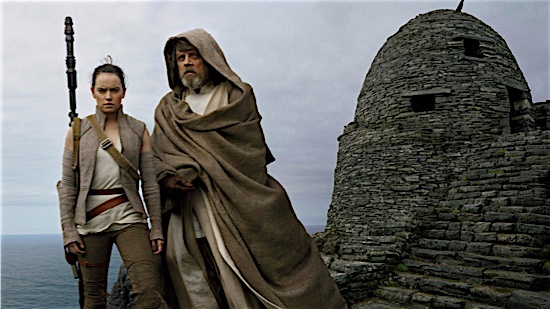
The Last Jedi, unlike its predecessor, has the freedom to be daring, and perhaps the most thrilling thing about it—and there are many, many thrilling things—is how abundantly it takes advantage of that freedom. If The Force Awakens was basically just Star Wars told again in a new, but familiar way, The Last Jedi challenges the audience, challenges the Star Wars mythos, even challenges the whole damned series itself. It blows the universe up to rebuild it; it is a continuation and a new beginning. And more than anything else, it goes places no Star Wars film has ever dreamed of going. In a way, the success J.J. Abrams had with The Force Awakens, particularly how decidedly fan-servicey it was, laid the groundwork for what The Last Jedi is able to pull off. That movie reminded you how much power and primal force this series still had. This movie is an even more impressive magic trick: It uses that power and force to connect you to something larger. Not everything in The Last Jedi works perfectly, but even its few missteps are all founded in the desire for something new, to take risks, to push an American myth into uncomfortable new directions. —Will Leitch
8. World of Tomorrow and World of Tomorrow – Episode Two: The Burden of Other People’s Thoughts (2015; 2017)
Director: Don Hertzfeldt

In the first part, in 16 minutes, Don Hertzfeldt lays out humanity’s destiny: a vastly interconnected age of barely functional connections. In stick figures, impressionistic smatterings of vibrant color, geometric arrays, a snippet of a Strauss opera and the perspective of one little girl, Emily (Winona Mae), World of Tomorrow makes all science fiction to come before feel limited, not far-reaching enough—not enough. In 16 minutes. In any of the subjects that keep us up at night, that define us through our calamities—mental degradation, the loss of memory, nostalgia, cloning, AI, robotics, time travel, immortality, death, the incomparable loneliness of the universe—in Hertzfeldt’s deceptively simple animation, all is boiled down to an essence, a “yes” or “no” question: Why does simply being human push us farther and farther away from each other? Further and further away from ourselves? In the case of Future Emily falling in love with a mining robot, Hertzfeldt doesn’t want us to take it seriously so much as feel the pain, any pain, of Emily inevitably abandoning the robot to its long, blank eternity without her. In the case of hundreds of thousands of botched time travel missions killing time travelers by stranding them in an unknown time, or, worse, depositing them into the thinnest outer reaches of our atmosphere so their bodies fall back to earth, a beautiful nighttime show of falling stars, Hertzfeldt expects you to find this all pretty funny, because he knows you are using laughter to bury the urge to scream hopelessly into the indifferent void about just how meaningless your existence truly is. In 16 minutes: All of this—including a moment that will make your heart skip a beat because, in 15 minutes, you’ve become irrevocably attached to this little girl, Emily Prime, and you can’t bear the thought of leaving her, this little stick person cartoon, to face the universe alone.
Episode 2, a headier, longer (22 minutes) and altogether more ambitious continuation of the first film’s story of the endlessly replicating entity beginning with Emily Prime, revolves around a realization, uttered by Emily-6, a clone of the clone Emily Prime met in the first film: “If there is a soul, it is equal in all living things.” Emily-6 is more vessel, more of a vestigial being, than individual human, created as a backup for Emily’s memories, and so serving no functional purpose. She once again travels to the past to walk with Emily Prime, this time through Emily-6’s own psyche, hoping Emily Prime will be able to offer some context, some meaning, for everything she’s storing. At once, Hertzfeldt captures that disorienting distance between our memories and our sensation of inhabiting them, a distance that only grows wider and weirder with time, to the point that we may even doubt their veracity. And yet, these memories are the key to our immortality. Are our memories what make us human? What make our souls? Revisiting a moment in Emily’s life in which she kills a bug, realizing that bug is dead, no clones to replace it, just gone forever, Emily-6 grasps the futility of her own design. If there is a soul, she has one different from Emily Prime, different from the version of Emily upon which she’s based. The empathy of this moment, as is the case with so much of what Hertzfeldt’s accomplished in barely half an hour, is heart wrenching. —Dom Sinacola
7. Her (2013)
Director: Spike Jonze

Spike Jonze’s colossal talent was far too great to remain trapped in MTV’s orbit; that became immediately clear when his breakout feature-length debut, Being John Malkovich, earned him an Oscar nod for Best Director. Following that minor postmodern masterpiece, he and screenwriter Charlie Kaufman continued their journey into solipsism with the hilariously unhinged Adaptation. As challenging, yet fun and accessible as Kaufman’s screenplays are, Jonze’s Her answers any lingering questions of whether those two movies’ (well-deserved) acclaim sprang solely from the power of Kaufman’s words. Retaining the sweetest bits of the empathetically quirky characters, psycho-sexuality and hard-wrung pathos of Malkovich, Her successfully realizes a tremendously difficult stunt in filmmaking: a beautifully mature, penetrating romance dressed in sci-fi clothes. Eye-popping sets and cinematography, as well as clever dialogue delivered by a subtly powerful Joaquin Phoenix, make Jonze’s latest feature one of the best films of 2013. It also serves as confirmation that—much like Her—the director is the complete package. —Scott Wold
6. Arrival (2016)
Director: Denis Villeneuve

Your appreciation of Denis Villeneuve’s Arrival will hinge on how well you like being led astray. It’s both the full embodiment of Villeneuve’s approach to cinema and a marvelous, absorptive piece of science fiction, a two hour sleight-of-hand stunt that’s best experienced with as little foreknowledge of its plot as possible. Fundamentally, it’s about the day aliens make landfall on Earth, and all the days that come after—which, to sum up the collective human response in a word, are mayhem. You can engage with Arrival for its text, which is powerful, striking, emotive and, most of all, abidingly compassionate. You can also engage with it for its subtext, should you actually look for it. This is a robust but delicate work captured in stunning, calculated detail by cinematographer Bradford Young, and guided by Amy Adams’ stellar work as Louise Banks, a brilliant linguist commissioned by the U.S. Army to figure out how the hell to communicate with our alien visitors. Adams is a chameleonic actress of immense talent, and Arrival lets her wear each of her various camouflages over the course of its duration. She sweats, she cries, she bleeds, she struggles, and so much more that can’t be said here without giving away the film’s most awesome treasures. She also represents humankind with more dignity and grace than any other modern actor possibly could. If aliens do ever land on Earth, maybe we should just send her to greet them. —Andy Crump
5. Blade Runner 2049 (2017)
Director: Denis Villeneuve
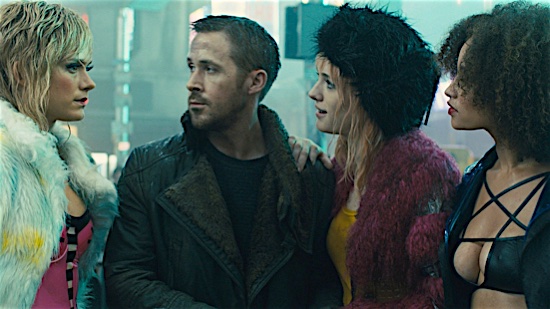
The debate between what makes something “real” or not has become a staple of adult-minded sci-fi fare in the three-plus decades since Ridley Scott made one genre masterpiece after another dithering over the same debate, but the strength of Blade Runner 2049 is in how intimately Villeneuve (and writers Hampton Fancher and Michael Green) attempt to have us experience this world through the unreal eyes of a Replicant, K (Ryan Gosling). Ideally, we are forced to think about what “humanity” is when empathy—caring for these robots—is the natural result of the filmmakers’ storytelling.
Revisiting Blade Runner, one may realize that there isn’t much of a story there. The same could be said for Dick’s novel, as well as many of his novels: There is breathtaking world-building, impressive use of language and speculative ideas expanded and thought out to thoroughly conceived ends, but our characters are just people existing in this world, and Blade Runner is really just the story of a cop hunting down four dangerous criminals. 2049, despite its heavy themes and heavier exposition, is about a cop who must find a very special robot before the evil mega-corporation does. The brilliance of Blade Runner, and now its sequel, is that the majesty of the imaginations behind them—the sheer sci-fi magnanimity on display—is enough to bind us to these characters. To care about them.
Blade Runner 2049, then, is undoubtedly the most gorgeous thing to come out of a major studio in some time. Roger Deakins has inculcated Jordan Cronenweth’s lived-in sense of a future on the brink of obsolescence, leaning into the overpowering unease that permeates the monolithic Los Angeles Ridley Scott built. The scale of the film is only matched by the constant dread of obscurity—illumination shifts endlessly, dust and smog both magnifying and drowning the sense-shattering corporate edifices and hyper-stylized rooms in which humanity retreats from the moribund natural world they’ve created. There is a massive world, a solar system, orbiting this wretched city—so overblown that San Diego is now a literal giant dump for New L.A.’s garbage—but so much of it lies in shadow and opacity, forever out of reach. What Scott and Cronenweth accomplished with the original film, placing a potboiler within a magnificently conceived alternative reality, Villeneuve and Deakins have respected as they prod at its boundaries. There’s no other way to describe what they’ve done other than to offer faint praise: They get it. —Dom Sinacola
4. Annihilation (2018)
Director: Alex Garland
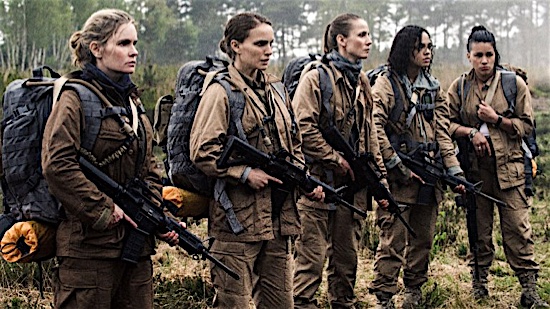
Annihilation is a movie that’s impossible to shake. Like the characters who find themselves both exploring the world of the film and inexplicably trapped by it, you’ll find yourself questioning yourself throughout, wondering whether what you’re watching can possibly be real, whether maybe you’re going a little insane yourself. The film is a near-impossible bank shot by Ex Machina filmmaker Alex Garland, a would-be science fiction actioner that slowly reveals itself to be a mindfuck in just about every possible way, a film that wants you to invest in its universe yet never gives you any terra firma on which to orient yourself, a film hoping you’re as confused and terrified as the characters you’re watching, these characters played by big stars (Natalie Portman, Tessa Thompson, Gina Rodriguez, Jennifer Jason Leigh) backed by a big movie studio, a film that becomes more confusing and disorienting as it goes along. In this, it is unquestionably successful. Garland mesmerizes with his visuals, but he wants you to be off-balance; like the alien (I think?) of his movie, Garland is not a malevolent presence, but simply an observer of this world, one who follows it to every possible permutation, logical or otherwise. It’s difficult to explain Annihilation, which is a large reason for its being. Loss, and regret, and the sensation that the world is constantly crumbling and rearranging all around you every possible second: The world of Annihilation feels familiar, but only at first. Reality is fluid, and ungraspable. A little like our current reality in that way. —Will Leitch
3. Under the Skin (2014)
Director: Jonathan Glazer

It’s a rare feat for a film to successfully convey the voice of the Other. Especially when that voice is an Other to everyone else here on Earth. Loosely based on Michel Faber’s book of the same name, director Jonathan Glazer’s take on Under the Skin finds greater fascination with translating an otherworldly perspective than with the novel’s rather transparent “meat is murder” didactic. It not only makes for a more interesting story, it takes the form of an experience that reminds one of why the medium of film is so special. Taking place in present-day Scotland, both in and outside Glasgow, Under the Skin follows the alien-hijacked visage of a woman (Scarlett Johansson) as she stalks and separates men from the herd, luring them back to her lair to meet an oily doom. That’s merely the premise, though: Glazer’s film slowly emerges as a deeply curious meditation on what it means to be human. It might be a bit hyperbolic to consider it an apt companion piece to Stanley Kubrick’s 2001: A Space Odyssey, but it surely touches upon a similar investigative theme, only in reverse. And, wow, like Kubrick’s touchstone, Glazer’s movie, too, is a visual knockout, thanks to the stunning mixture of stillness and claustrophobic disorientation captured by cinematographer Daniel Landin. And as primal and affecting as the film’s imagery is, its score and sound design is more than a fitting match. Of course, any film whose story relies on a single actor—regardless of any other of its competencies—can still stumble and not recover if that actor’s performance falls flat. But Scarlett Johansson again proves she’s not merely another pretty face, even if that pretty face is an awfully useful tool in portraying a lethal seductress. Along her character’s journey from dispassionate serial killer to vulnerable human sympathizer, Johansson hits her marks with chilly precision. The casting of Johansson, too, proves additionally inspired; just as with David Bowie’s Thomas Newton in The Man Who Fell to Earth, the very nature of their iconic presence further distances the notion of mere actors-cum-aliens—they’re already elevated above the clouds in their stratospheric fame. —Scott Wold
2. Spider-Man: Into the Spider-Verse (2018)
Directors: Bob Persichetti, Peter Ramsey, Rodney Rothman
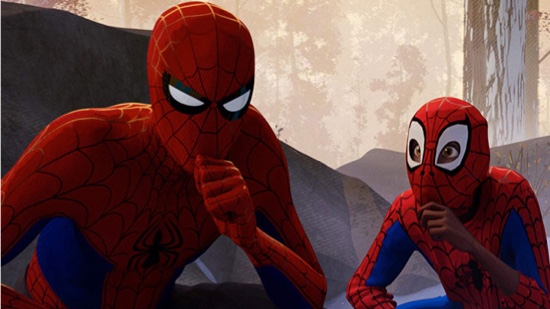
there are, rarely, films like Spider-Man: Into the Spider-Verse, where ingredients, execution and imagination all come together in a manner that’s engaging, surprising and, most of all, fun. Directors Bob Persichetti and Peter Ramsey, writer-director Rodney Rothman, and writer Phil Lord have made a film that lives up to all the adjectives one associates with Marvel’s iconic wallcrawler. Amazing. Spectacular. Superior. (Even “Friendly” and “Neighborhood” fit.)
Along the way, Into the Spider-Verse shoulders the immense Spider-Man mythos like it’s a half-empty backpack on its way to providing Miles Morales with one of the most textured, loving origin stories in the superhero genre. It also provides simultaneous master classes in genre filmmaking. Have you been wondering how best to intersperse humor into a storyline crowded with action and heavy emotional arcs? Start here. Do you need to bring together a diverse collection of characters, nimbly move them (together and separately) from setting to setting and band them together in a way that the audience doesn’t question? Take notes. Do you have an outlandish, fantastical concept that you need to communicate to the viewers (and characters) without bogging down the rest of the story? This is one way to do it. Would you like to make an instant contemporary animated classic? Look (and listen).
Ultimately, this particular intensely collaborative endeavor clicks on all cylinders in a manner even the MCU could learn from. As a result, Spider-Man: Into the Spider-Verse vaults into consideration as one the best Spider-Man films ever. —Michael Burgin
1. Mad Max: Fury Road (2015)
Director: George Miller
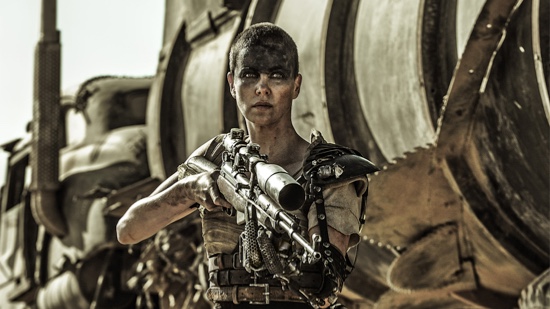
Thirty years is a long time to wait for a sequel. If not for the passage of time, though, then George Miller’s career trajectory since 1985 may have initially been reason enough to regard the latest installment in the dystopian Mad Max series with caution. The new film stars Tom Hardy as Max Rockatansky with Charlize Theron as his co-lead, a casting coup that earned goodwill from intrigued onlookers when first announced. When Miller showed San Diego Comic-Con attendees footage from the unfinished product in 2014, any and all initial doubt turned to buzzing fervor. Early apprehensions weren’t misguided. They were just misplaced. If it takes a movie three decades to galumph into theaters, the least you can hope for is that it ends up being good.
Every single dollar of Mad Max: Fury Road’s reported $150 million budget is in the frame at all times, but Miller is so unpretentious that you won’t catch the price tag. Real people cruise in real vehicles across real expanses of desert. When the film does lean on computers, it’s to fill in the margins or summon the occasional dust storm. Miller defines his aesthetic through physical texture, tells story through action, and shows no interest in the routine of contemporary Hollywood spectacle. He’s made a two-hour Star Wars cantina scene stuffed to the gunwales with insanity. Immortan Joe’s vanguard includes a car mounted with piles of speakers and a nutjob wielding a double-necked guitar that belches fire. It’s both the most and the least demented idea the movie has on tap.
Hardy and Theron both lend muted gravitas to their roles—she has more spoken dialogue than him, if only just—and act through gesture and expression more than anything else. It’s clear, though, that this is her movie more than it is his, a huge accomplishment in light of the film’s intrinsic masculinity. Mad Max: Fury Road is an inclusive effort that invites us to join its heroes in breaking down gender dichotomies. Miller has made a phenomenal action film with a righteous cause, a movie that layers smart commentary atop jaw-dropping set pieces. May he ride eternal, shiny and chrome. —Andy Crump
GET PASTE RIGHT IN YOUR INBOX
The best music, movies, TV, books, comedy and more.
-

-

-

-

-

-

-

-

-

-

-

-

-

-

-

-

-

-

-

-

-

-

-

-

-

-

-

-

-

-

-

-

-

-

-

-

-

-

-

-








































